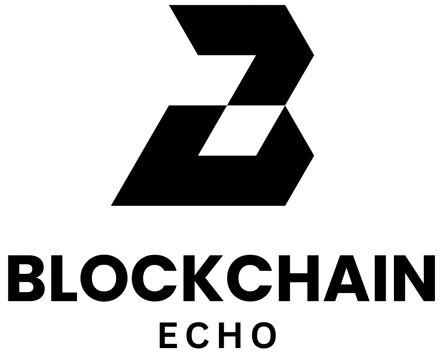
As Dubai real estate goes fractional through blockchain, what is tokenization actually solving — affordability, access, or illusion?
Prypco Mint on the XRP Ledger opens the door to fractional real estate in Dubai
Dubai has introduced a new way to enter one of the world’s most expensive property markets, not by reducing prices, but by rethinking the idea of ownership itself.
On May 25, the Dubai Land Department launched Prypco Mint, a government-backed platform built on the Ripple (XRP) Ledger. The service allows UAE residents to purchase legally recognized fractions of real estate parcels, starting at AED 2,000, which is roughly $545.
The initiative aims to tokenize up to $16 billion worth of property by 2033, opening the door to smaller investors who previously had little access to this asset class.
Each token is directly tied to Dubai’s official property registry and represents a valid title deed, addressing a gap that many global blockchain property ventures have yet to resolve.
Developed in collaboration with Ctrl Alt, a UK fintech firm focused on asset tokenization, the platform operates under the oversight of Dubai’s Virtual Assets Regulatory Authority.
It is currently in a pilot phase, restricted to UAE ID holders, and running within the city’s Real Estate Sandbox, a testing environment designed for new property technologies.
DLD has signaled that if the pilot progresses as planned, the platform could become available to international investors within the next 12 to 18 months, subject to regulatory clearance.
The project is part of Dubai’s broader Real Estate Sector Strategy 2033, which seeks to digitize and modernize the market while making it more inclusive.
The launch comes at a time when demand for Dubai real estate is reaching new highs. According to the 2025 Henley & Partners Wealth Report, the city is home to 81,200 millionaires, 237 centimillionaires, and 20 billionaires.
For most retail investors, access to this market has remained limited. Prypco Mint does not change the fundamentals of Dubai’s property sector, but it may finally offer a legal, regulated way to participate in it without the traditional capital barrier.
Dubai real estate tokenization and what is tokenization
Dubai’s real estate market continues to set global benchmarks, not just in size but in the speed of change.
In 2024 alone, the sector recorded AED 761 billion (around $205 billion) in transaction value, reflecting a 36% year-on-year jump in volume and a 20% increase in overall value.
The total number of real estate procedures, including both property deals and rental agreements, reached 2.78 million, the highest in Dubai’s history and a 17% rise compared to 2023.
Against this backdrop, premium zones like Dubai Marina and Business Bay are seeing rising traction. Average prices in these districts have climbed 12% year-on-year in early 2025, now standing at AED 2,300 ($626) per square foot.
Buying an entire apartment in these areas often costs around AED 5 million ($1.36 million), a level that puts direct ownership out of reach for most investors.
Through tokenization, that same asset can be split into smaller, tradable units. A 1% share now requires AED 50,000 ($13,600), while the minimum stake starts at AED 2,000 ($545).
The efficiency gap is just as clear. Traditional property transactions in Dubai can carry 10–15% in overheads, covering broker commissions, transfer fees, and legal costs. Closures typically take two to three months.
Prypco Mint’s blockchain-based model reduces these costs to around 0.5% and allows settlements in under 10 minutes. Smart contracts automate both title issuance and revenue distribution, removing the need for intermediaries.
The platform also supports income generation. Rental yields in areas like Dubai Marina average 6-8% annually. A $10,000 tokenized share could yield between $600-800 per year, with payouts automated via smart contracts.
These monthly returns offer more than just cash flow. They create a reason to hold tokens long-term, mirroring the behavior of traditional property ownership rather than speculative digital flipping.
Demographic trends add another layer. Dubai’s expatriate population grew 4.5% in 2024, reaching 8.9 million. Many of these residents have long-term roots in the city but limited capital to invest in full property ownership.
Prypco Mint presents an entry route that matches their financial capacity, potentially unlocking real estate access for a broader segment and drawing in capital that might otherwise stay outside the system.
Global platforms are setting the early rules of engagement
Property tokenization has been quietly expanding across global markets, with the U.S. emerging as one of the most active regions. Platforms like RealT and Lofty have led early adoption, focusing on retail participation rather than institutional scale.
According to ScienceSoft’s 2025 report, RealT has tokenized more than 970 properties in the US, offering entry points as low as $50.
Around 88% of its users invest under $5,000, indicating strong interest from small-scale investors who want real estate exposure without full ownership or long-term commitments.
This rise in retail participation reflects growing confidence in blockchain infrastructure for managing real-world assets. But the system still faces key friction points.
One of the biggest issues is the lack of cross-platform interoperability. Once tokens are purchased, transferring or selling them outside the issuing platform remains complex and often restricted.
Some financial institutions are beginning to address this constraint. Swift, in collaboration with Chainlink and banks including Citi and BNY Mellon, is developing systems for enabling cross-network transfers of tokenized assets, and aims to create a unified layer for moving assets between traditional finance rails and decentralized infrastructure.
If implemented successfully, such frameworks could improve liquidity and simplify how real estate tokens are traded or held across platforms.
The US market is already showing strong momentum. Much of this momentum is coming not only from banks but also from alternative investment platforms that are expanding the definition of ownership.
Parcl, for example, allows users to trade exposure to real estate price indices rather than holding the underlying asset, shifting the focus from property ownership to performance-based exposure.
Such asset classes are becoming prime candidates for tokenization, especially as fund managers in private markets look to diversify capital sources and reduce reliance on residential property.
Despite this progress, regulation continues to trail behind. In the US, questions around how tokenized property fits within mortgage structures and broader legal frameworks are slowing adoption. For tokenization to scale, these legal and regulatory uncertainties would need clearer resolution.
Returns on tokenized Dubai real estate
Global interest in tokenized real estate is gaining momentum. According to Deloitte, the market could grow from $300 billion in 2024 to $4 trillion by 2035, reflecting a compound annual growth rate of over 27%.
The GCC region is expected to contribute meaningfully to this growth. With regional real estate projected to reach $4.67 trillion in 2025, tokenized formats could account for a sizable share of future transactions.
Dubai’s early push through regulated tokenization platforms, along with similar developments emerging in Saudi Arabia, may help shape this path.
Investment opportunities are also expanding in variety. Prypco Mint focuses on Dubai’s retail and luxury segments, while U.S.-based platforms such as RealT and Lofty offer exposure to residential and rental properties.
Other regions are contributing as well, with European vacation homes, urban apartments, and alternative assets like data centers entering tokenized portfolios.
Firms like Securitize are now bundling these properties into tokenized real estate funds, allowing investors to gain diversified exposure across asset types and geographies.
Returns depend on the segment. In 2024, data centers delivered 11.2% returns, as noted in McKinsey’s Global Private Markets Report. Prime real estate in Dubai, meanwhile, has shown consistent annual appreciation between 5% and 8%.
Beyond price growth, tokenized real estate can also provide income. Rental earnings are often distributed to investors as dividends, creating a mix of capital gains and passive returns.
Performance, however, varies by asset and strategy. Properties with strong fundamentals, including location, demand, and stable occupancy, tend to offer more reliable outcomes.
The platform layer matters as well. Most tokenized real estate platforms charge annual fees in the range of 1% to 3%, which can affect final returns.
Factors like income distribution structure, liquidity options, secondary market availability, and buyback mechanisms should be considered during due diligence.
Limitations remain. While tokenization improves access and operational efficiency, liquidity on secondary markets is still uneven. Without active buyers, tokens can be difficult to sell, and price discovery remains inconsistent.
Connections to broader crypto infrastructure also introduce volatility risks. Platforms that rely on native tokens or digital wallets may see value fluctuations tied to wider market movements.
Legal and tax frameworks are still developing. Jurisdictions vary in how they classify tokenized assets, especially when it comes to capital gains, dividend income, and investor protections.
As regulators continue to address these gaps, the environment is expected to mature, but new rules may affect tax burdens, international participation, and ongoing compliance requirements for platforms and investors.
The appeal of tokenized real estate lies not in replacing traditional property ownership, but in reshaping who gets to participate and how. The growth potential is clear, but a maturing market will still depend on informed choices and realistic expectations.


